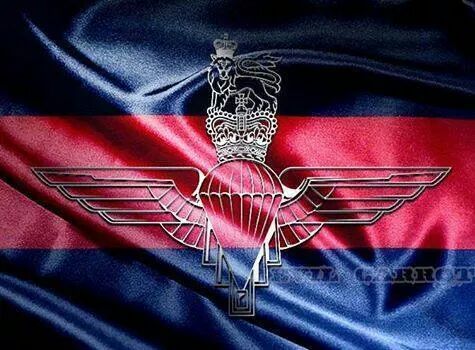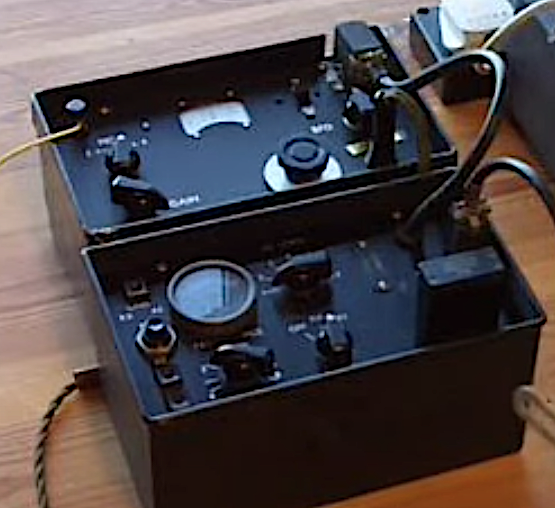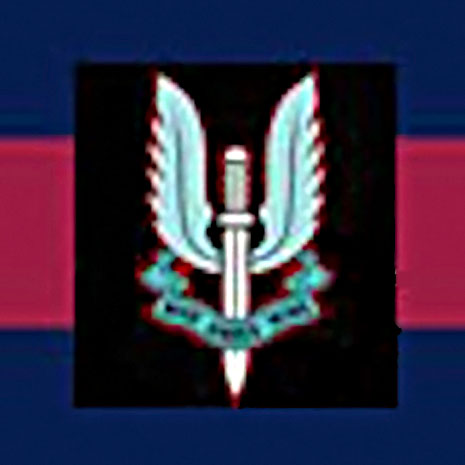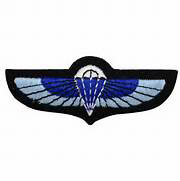

The Training
The Special Forces Role: (1964 & 1965)
During this period in the 1960's The Guards Parachute Company formation changed to that of a Special Forces Company and were now working in the SAS role. The Guards Company changed from Pathfinder/Reconnaissance patrols, to four man deep penetration Jungle Patrols.
Training for the Special Forces roll:
In 1964 & again 1965 The Guards Parachute Company retrained in the Special Forces roll and were trained by 22nd SAS both in Hereford and in the jungles of Borneo. After intense Jungle Training near Brunei, they were then deployed into Sarawak as long range SAS type four man jungle patrols.
Training for The Borneo Jungle:
After initial courses in Hereford and before arriving in the Far East, extensive courses for our own The Medics were undertaken at major teaching hospitals throughout London and the Home Counties. This also included day and night shifts in A&E departments.The medics were also taught Dentistry, for many of the natives suffered with bad teeth due to chewing beetle nut which rotted their teeth away causing problems which had to be addressed when working in the villages on'' Hearts and Minds'' operations. The Medics also had to learn to give injections as a sick soldier in a four man patrol had to be treated on the spot, as these patrols were working in areas up to over two hundred miles or more away from their base in Brunei.
The linguists (Lead Scouts) These were the first of the Guards Para soldiers to arrive in The Far East. They attended The Army Language School in Singapore, where they were taught to speak Malay, for at least one member of the four man patrol had to be able to communicate with the locals, especially when in the villages or on the trading routes between Borneo and Indonesia.
The Morse Signallers were also given extensive courses in morse code, training firstly with 22 SAS at Hereford then further courses at Pirbright in Surrey. Most signallers were soon capable of 20 -25 words per minutes. This was the only means of communication with the ouside world for re-supply of food, or calling for back up in case of a fire fight (Contact). The morse radio set was also the only means of communication for evacuating the Patrol from the jungle. ie, calling for a helicopter to pick up the patrol, as the patrols (except in very rare circumstances) never used the same DZ for drop offs and pick ups into and out of the jungle. The signaller (Radio Operator) carried the heaviest load. He had to carry the radio set and back up batteries including 14 days of rations although the other 3 members of the patrol did carry some of his food rations to lighten his load, even so his daily Bergan load always weighed about 75lbs.
The Four Man Patrol:
No1---The Lead Scout (linguist) ----The most important job in the patrol as the ears and eyes at the front of the patrol, he had to be alert at all times, with eyes peeled into the dense jungle, and always with one finger on the trigger. His armoury was of his choice, some carried rifles, most carried automatic armoury and others chose to use a shot gun, for they never knew what lay behind the next tree, and their quick fire power was the key in a contact.
No 2---The Commander- Normally a Officer or NCO together with his three men were dropped off by helicopter to a jungle DZ. These patrols were then on their own, working in a hostile area's some hundred's of miles away from their base
The Commander kept the patrol together, It was his job to make sure that all members were trained in all aspects of jungle warfare, and to see that every member in the patrol passed information and training to the others members about their particular role in the patrol, ensuring that all members of the patrol could send a morse message, also to help the Medic especially when it came to pulling teeth in a jungle village. Finally-- The Lead Scout (linguist) would teach the other patrol members the local language so that they could speak words and sentences in Malay when meeting with local tribesmen.
These four man patrols worked in very dense or secondary jungle which sometimes was unpassable. Patrols would sometimes find themselves walking in a river for day's on end, as there was no other place to go to complete their mission. These patrols had to be alert and always had one finger on the trigger, as a highly trained enemy could be waiting behind the next tree. This jungle was so thick and dense, and could also be very dark even during daylight hours, especially during the monsoon season or when a storm was approaching. Under the canopy became their home for weeks or sometimes months. The patrols had to become as vigilant as the locals were in tracking and jungle skills. The patrols never used tracks (because of booby traps and mines) they sometimes had to cross tracks and this was a worrying time, as the enemy would watch the tracks with ther own native trackers, but these patrols did not take long to get into jungle mode and became experts, thanks to their initial training by the SAS.
No 3---The Signaller---- His radio skills enabled him to send messages such as, Sitreps (Situation Reports) and Contact Reports (XO)and Re-supply messages in Morse Code back to the base station HQ in Brunei. Sitreps were sent twice a day, usually at first light and again at dusk, for this is the only time that the patrol would stay static long enough for the Sitreps to be sent. Contact reports would be sent from a safe distance if the patrol got into a fire fight. It was the signallers job to move off from the fight while the rest of the patrol covered him so as he could get away to send the ''Contact'' message, for this was a hostile jungle and the patrols had to be on their guard 24 hrs a day. The signaller had to be able to pick out his base operators touch on the keyboard with 20-30 other various morse stations all sending at the same time on the same frequency. The Para Coy patrols carried three different operating frequencies. (applicable only to their Patrol) The Signaller's task was no mean feat --as he had to get it right in horrendous conditions in a in-hospitable jungle, in daily temperatures of over 100F.
No 4---The Medic-----He looked after the health of the patrol and also helped administer medical help to the locals in the villages. His position in the patrol was the last man of four. He mostly walked backwards or looked backwards for most of his time in the jungle, for his job was to cover the rear position of his patrol.
The the lead Scout and the Medic did on occasions change roles, mainly to rest the lead scout from his arduous role at the front of the patrol, and also to give the medic a chance in a different role from constantly covering the patrols back door.
The Commander carried a Sarbe Beacon and the Medic carried an inflatable Air Balloon.
These were for emergency use only
----------------------------------
FREE- FALL PARACHUTING & HALO
During 1967 & 1967 members of the Guards Company were attending FREE FALL parachuting courses, with the French Army at ''The Ecole des Troupes Aeroportes'' in Pau (Southern France) Upon their return from France two members of the company were sent to the Joint services Free -Fall team then onward to The Army School of Parachuting at Neatheravon for a Free Fall Parachuting Instructors Course. The Army had some new ideas for these trained free fallers and so the advent of ''HALO'' (High Altitude Low Opening) parachuting begun.
THE FIRST HALO (High Altitude Low Opening) course took place at RAF Abingdon with four members of The Guards Para Company who joined the free fall troops of the Air Troops from the three Squadrons of the 22nd Special Air Service. These courses were undertaken by the Parachute Instructors of the RAF's No1 Parachuting School at RAF ABINGDON.
However it must be said that members of ''The RED DEVIL FREE FALL TEAM'' had tried and tested this new way of parachuting some time before. During this time in the late 1960's it was decided by those at the MOD to have specialised troops to carry out this new way of parachuting.
Parachuting from altitudes up to 24,000ft the planes carrying these free fallers were undetected by ground radar because of their height, and the free fall paratroopers would also arrive with stealth like precision on target.
This was a new and very different way of parachuting. From these high altitudes, with the Bergen now carried on the back of the legs, and the rifle strapped to your side, it was found to be the way to keep a stable position throughout the flight. (This position has now been updated and the Bergen is now situated on the upper front of the legs)
Free fallers were classed as a flying object, so you had (in those day's) obtain a Board of Trade Certificate to fly. These free fallers were obtaining speeds of up to 150 MPH although the free faller could regulate his speed by changing his arms and leg positions to put his body into different configurations which changed the body's surface area and therefore made him go faster or slower.
As troops were jumping from high altitude it was also necessary to have an oxygen bottle and mask and a pressured "G" suit. This way of parachuting became a whole new art, as the free fall soldiers now had to get to the destination on their own by means of free fall manoeuvres to get them across the sky as fast as they could, whilst at the same time dropping in height all the way. Upon opening they could now use the steerable parachutes to get themselves to the target, although these HALO troops were not in the air for very long once the parachute had opened. (and that’s where the low opening bit came into play!!!)
One Guards Para members can recall only being in the air for less than 5 seconds after the ''chute ''had opened.
That was classed as a very low opening!!
In 1975 The Guards Parachute Company were disbanded
in the MOD Army cut-backs
The New Pathfinders.
*** Note: Some nine years later it was deemed by the MOD, that The Elite "Pathfinder Company" should be re-initiated again in the same role as The Pathfinders of the Guards Parachute Company (which they had already disbanded)
It took them nine years to realise this and having already disbanded the Pathfinders they still didn't have any expertise to fulfil this important role within the Parachute Brigade.
Today's new Pathfinders come under the command of the Parachute Brigade HQ.
Also today within the Parachute Regiment is 6 Platoon of B Company of 3 Para, here is where we still find the Household Division troops called the Guards Para Platoon. This is a highly specialised platoon of parachute trained soldiers, many who have served with distinction with 3 Para in Afghanistan.
-------------------------------------
Participant Role in Operations During The Borneo Campaign.
The vast majority of Claret Operations were undertaken by British infantry units, including the Gurkha's. Special Forces operations were undertaken by the British Special Air Service, Special Boat Sections, & No1 Guards Independent Parachute Company, The Gurkha Independent Parachute Company, Patrol Companies of the Parachute Regiment, C Company 2nd and D Company 3rd Battalions of The Australian Special Air Service Regiment and the No1 Ranger Squadron New Zealand Special Air Service The reconnaissance and intelligence gathering activities of the Border Scouts, mostly trained by 22 SAS and the Guards Para Company, are unclear (apart from their accompanying many infantry patrols).
Claret operations were only publicly disclosed by Britain in 1974, whilst the Australian government did not officially acknowledge its involvement until 1996.
The operations varied in size from 4 man Special Forces reconnaissance patrols to infantry fighting patrols in company strength, and sometimes coordinated in a battalion operation.
The number of Claret Operations and their objectives is still unclear. Weekly operational reports by brigade, higher headquarters and some units are available in UK National Archives. They do not identify any actions as specifically "Claret"
They outline 'contacts' in a way that implies they took place in East Malaysia but provide a grid reference, from which those south of the border can be identified with the aid of a 1:50,000 scale map. However, the border is some 1,000 miles (1,600 km) long
---------------------------
The Guards Parachute Company were involved in two major ambushes during their time on "Claret" Opp's but not much has ever been disclosed about them due to the secrecy of the operations. However one Military Medal was won during the first ambush when the eight man patrol came upon 50 soldiers of the Indonesian Para Raiders Battalion. The second opp was a somewhat smaller affair which also engaged enemy troops across a river in Kalimatan. All Guards Para patrols returned to base unscathed!
The Formation of "G" Squadron


Late in 1965's saw The Guards Company's return from Borneo and the Formation of
''G'' Squadron SAS:
The Guards Parachute Company has just returned from the second tour of Borneo, and were based at Combermere Barracks in Windsor.
The 22nd SAS Regiment's Squadrons were being stretched as troubles heated up around the world. The Regiment were already short of one Squadron after ''C'' Squadron had been disbanded some years earlier.
From their location in Windsor in late 1965 and early 1966 ''G'' squadron 22 SAS started its formation. The ''G'' denoting "Guards" Squadron.
It's initial members were from The Guards Parachute Company, all volunteers who had served in the jungles of Borneo. These were soon joined by other members of the Household Brigade after first passing SAS Selection at Hereford.
In October 1975 No 1 (Guards) Independent Parachute Company was eventually disbanded (due to government cut backs) most members returned to their parent regiments, although some Guards Para members went on to join their comrades in 'G' Squadron 22 SAS HQ Hereford.
From late 1965 Onwards:
After the Borneo Campaign, and the start of "G" Squadron SAS. The Guards Para Company became proficient in underground surveillance which meant living in a darkened hell for 2 or more soldiers, mostly underground mostly in the dark, in a dugout trench, which was then camouflaged over. The men lived in these condition for days on end, taking notes and watching the enemy, then sending back the valuable information via a radio link to their HQ.